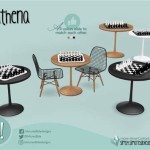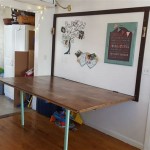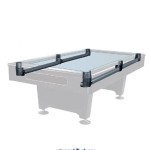What Size Pool Tables Do Bars Use?
The selection of a pool table for a bar is a multifaceted decision, heavily influenced by factors such as available space, anticipated usage, and the desired atmosphere. Understanding the common pool table sizes utilized in commercial settings is key for bar owners aiming to provide an enjoyable and functional amenity for their patrons. The following discussion explores the typical sizes found in bars, the considerations that contribute to their selection, and the implications each size has on gameplay and space requirements.
Standard Pool Table Dimensions and Space Requirements
While various sizes of pool tables are manufactured, two sizes predominantly find their way into bars and commercial establishments: 7-foot and 8-foot tables. These dimensions refer to the playing surface, measured from bumper to bumper on the long side. A 7-foot table, also known as a bar table, typically measures 3.5 feet wide and 7 feet long. An 8-foot table extends those dimensions to 4 feet wide and 8 feet long. It's crucial to recognize that these measurements only represent the playing surface; the overall footprint of the table, including the rails, will be slightly larger.
Beyond the table’s dimensions, adequate space surrounding the table is paramount for comfortable gameplay. Professionals often recommend a minimum of 5 feet of clear space around all sides of the table. This allows players to comfortably maneuver and execute shots with standard-length cues (typically 57-58 inches) without obstruction. Insufficient space can lead to awkward shots, potential damage to the table or surrounding furniture, and a less enjoyable experience for patrons.
Therefore, for a 7-foot table, a space measuring approximately 17 feet long by 13.5 feet wide is needed. An 8-foot table necessitates a larger area, roughly 18 feet long by 14 feet wide. These figures serve as minimum guidelines; larger spaces are always preferable, providing greater comfort and flexibility for players. Careful consideration of these spatial requirements is vital during the planning stages to ensure the pool table integrates seamlessly into the bar's layout and doesn't impede traffic flow.
Factors Influencing the Choice of Pool Table Size in Bars
Several factors contribute to a bar owner's decision when selecting a pool table size. Space availability is the most fundamental constraint. Bars with limited square footage often opt for 7-foot tables to maximize the number of tables they can accommodate or to preserve space for other amenities. In larger venues, 8-foot tables might be preferred, offering a slightly more challenging game and a more professional feel.
The target clientele also plays a significant role. If the bar caters to casual players or beginners, a 7-foot table can be more forgiving and accessible. These smaller tables promote faster-paced games and require less precision, making them suitable for recreational players. Conversely, bars that attract more serious pool players might choose 8-foot tables to cater to their skill level and provide a more authentic billiard experience. This decision hinges on the establishment's overall atmosphere and the type of entertainment it seeks to provide.
Budget considerations are also relevant. Generally, smaller pool tables tend to be less expensive than larger ones. The cost difference stems from variations in materials, manufacturing complexity, and shipping expenses. Bar owners must weigh the cost of the table against the potential revenue it can generate and the impact it will have on customer satisfaction. Also, the long-term cost of maintaining the table, including felt replacement and repairs, should be factored into the decision.
Finally, aesthetic considerations can influence the choice. A larger pool table can serve as a focal point in the bar, adding to the visual appeal of the space. The size and style of the table can contribute to the overall ambiance and complement the bar's décor. Conversely, in some spaces, a smaller table might be preferred to maintain a more understated and intimate atmosphere.
Gameplay Differences Between 7-Foot and 8-Foot Pool Tables
While the size difference between 7-foot and 8-foot pool tables might appear marginal, it significantly impacts gameplay. The larger playing surface of an 8-foot table introduces longer shots, demanding greater accuracy and cue ball control. This translates to a more challenging and strategic game, particularly for experienced players. The added space also necessitates more precise break shots to effectively scatter the balls and create scoring opportunities.
On a 7-foot table, the shorter distances between balls make for quicker and more forgiving gameplay. Players can often get away with less precise shots, and the game tends to be faster-paced. This makes 7-foot tables more suitable for casual players and beginners who are still developing their skills. The smaller size also encourages more action and less strategic planning, which can be appealing in a bar setting where patrons are often looking for quick and entertaining recreation.
The pockets on 8-foot tables are typically designed to be slightly tighter than those on 7-foot tables. This increased difficulty further challenges players to improve their aiming and precision. Conversely, the more forgiving pockets on 7-foot tables allow for a higher percentage of successful shots, leading to a more satisfying experience for less skilled players. The ball return system also differs between the two types of tables, with some tables offering a manual return system and others offering an automatic ball return system. The ball return system should be of high quality to prevent balls from getting stuck and disrupting the flow of the game.
The type of felt used on the table also influences gameplay. Faster felt allows for quicker ball speeds and more spin, while slower felt provides greater control. The choice of felt often depends on the desired playing style and the skill level of the players. Bars that cater to serious players might opt for faster felt to enhance the challenge, while those that cater to casual players might prefer slower felt to make the game more accessible.
In summary, the size difference between 7-foot and 8-foot pool tables significantly affects the difficulty, pace, and overall feel of the game. Bar owners must carefully consider the skill level and preferences of their target clientele when making their selection. This choice will not only impact the gameplay experience but also contribute to the overall atmosphere and appeal of the establishment.

Measure Your Room For A Pool Table Royal Billiard Recreation

The Official Size Of A Pool Table Canadian Home Leisure

Pool Table Room Size Guide Chart Birkbeck Billiards

Pool Table Room Size Calculator

What Is A Full Size British Pool Table Liberty

Pool Table Sizes Choosing The Right One For Your Room

Regulation Size Billiard Tables What Is Legacy Billiards

Pool Table Sizes Choosing The Right One For Your Room

Pool Table Room Size Guide Chart Birkbeck Billiards

What Is A Full Size British Pool Table Liberty
Related Posts








